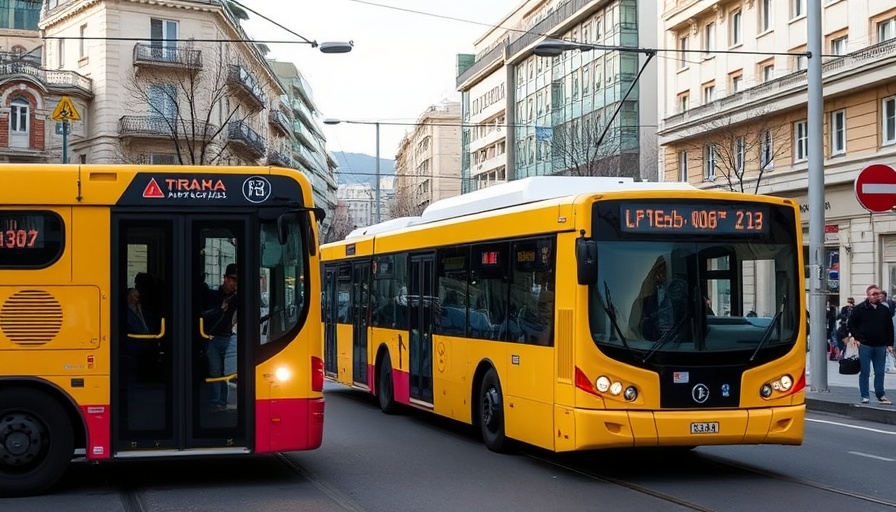
Shell's New Test Centre: A Leap Towards Heavy-Duty Electrification
In a move that underscores its commitment to renewable energy and sustainable transportation, Shell has announced the inauguration of a groundbreaking test centre for megawatt charging infrastructure in Hamburg, Germany. This facility is set to be the most powerful of its kind in the country, with the capability to support charging capacities of up to five megawatts. The centre will cater to a range of electrically powered vehicles, including trucks, buses, tractors, construction vehicles, and even ships, marking a significant advancement in the battle against transport-related CO₂ emissions.
What's Driving the Shift to Megawatt Charging?
The transport sector is one of the largest contributors to global greenhouse gas emissions, with heavy-duty vehicles accounting for a significant portion of this pollution. As cities grow and the demand for goods and services increases, the electrification of transport becomes more urgent. Shell's new test centre will focus on fast and efficient charging solutions, helping to meet the rising demand for electric heavy vehicles. The ambitious plan promises to accelerate the transition to a more sustainable future, aligning with broader climate goals worldwide.
Innovative Features of the Test Centre
Strategically located at the Shell Technology Centre in Hamburg, the new facility boasts an impressive array of technological advancements. It will feature twelve automated test benches and over fifty adaptable test stations, along with climate chambers designed to simulate extreme weather conditions ranging from -40 to +50 degrees Celsius. This comprehensive testing environment allows vehicle and infrastructure manufacturers to examine critical parameters such as interoperability, energy management, and safety. Notably, only renewable energy sources will be utilized to power the tests, reinforcing the centre's commitment to green energy practices.
Collaborative Efforts in Decarbonization
Felix Faber, CEO of Shell in Germany, stated, "With the construction of the most powerful test centre for electrically powered heavy vehicles and infrastructure, we are a pioneer in the industry." The centre is not merely a milestone for Shell but also serves as a collaborative hub where industry partners can converge to develop innovative solutions for decarbonising the transport sector. This joint effort is vital as it enables stakeholders from diverse backgrounds—vehicle manufacturers, charging infrastructure providers, and policymakers—to work together in accelerating the electrification of the transport landscape.
Future Predictions: The Rise of Electric Heavy-Duty Vehicles
As industries pivot towards sustainable practices, the role of electric heavy-duty vehicles will only deepen. The installation of charging infrastructure capable of supporting high-capacity demands is a key enabler for this transition. As the technology matures, we can expect a proliferation of electric trucks and buses on the roads, contributing to reductions in urban air pollution and greenhouse gas emissions. The implications for businesses and homeowners who adopt these technologies are extensive, potentially leading to improved energy independence and reduced fuel costs over time.
Implications for Homeowners and Businesses
For those invested in solar and green energy, the advancements stemming from Shell's test centre could represent unique opportunities. As electric vehicles gain traction, businesses will benefit from adopting eco-friendly transportation solutions, whilst homeowners could see advantages in leveraging renewable energy solutions for charging needs. Whether it’s installing solar-powered home charging stations or participating in community charging initiatives, the integration of electric vehicles into daily life is becoming increasingly achievable.
The testing centre in Hamburg is more than just a facility; it’s a significant stepping stone towards a greener future for the transport sector and beyond. As advancements in charging infrastructure keep pace with vehicle technology, we move closer to a sustainable transportation ecosystem.
By understanding the enormous potential of this new infrastructure investment, stakeholders—from manufacturers to eco-conscious homeowners—can seize opportunities that align with the global push for sustainability. It's time to adapt and embrace the shift towards electrification in transport. Explore local and innovative solutions that can support your transition to greener living.
 Add Row
Add Row  Add
Add 



Write A Comment